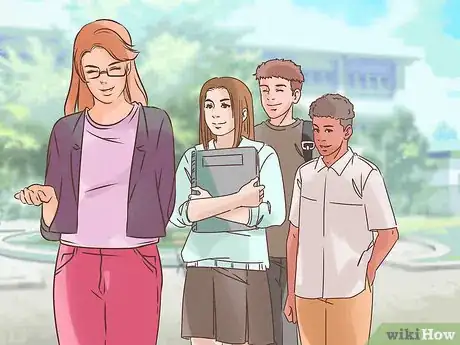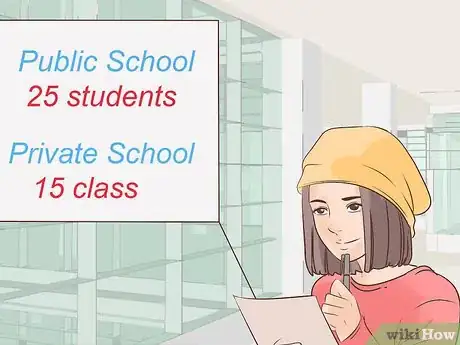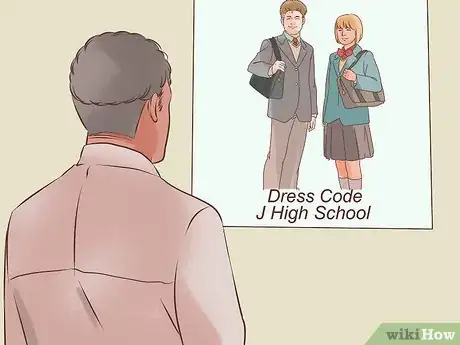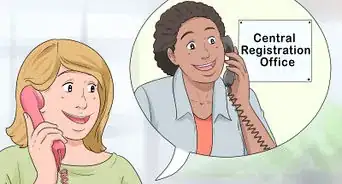This article was co-authored by Katie Styzek. Katie Styzek is a Professional School Counselor for Chicago Public Schools. Katie earned a BS in Elementary Education with a Concentration in Mathematics from the University of Illinois at Urbana-Champaign. She served as a middle school mathematics, science, and social studies teacher for three years prior to becoming a counselor. She holds a Master of Education (M.Ed.) in School Counseling from DePaul University and an MA in Educational Leadership from Northeastern Illinois University. Katie holds an Illinois School Counselor Endorsement License (Type 73 Service Personnel), an Illinois Principal License (formerly Type 75), and an Illinois Elementary Education Teaching License (Type 03, K – 9). She is also Nationally Board Certified in School Counseling from the National Board for Professional Teaching Standards.
There are 8 references cited in this article, which can be found at the bottom of the page.
This article has been viewed 39,961 times.
Many students that attend private school find that public schools suit them better. If you haven’t completely made up your mind, there is a lot to consider. Do your research so you can make the most informed decision and so you’re prepared for every possible difference between your old school and your new one.
Steps
Researching the Differences
-
1Determine your school district. While you can choose between various private schools in your area, public schools are assigned by the geographic district you live in. This means you’ll probably only have one choice.
- If you don’t know which public school district your home is assigned to, go to http://schooldistrictfinder.com and type in your address.
-
2Check the ratings. You can find comprehensive public school assessments through various free, independent resources.
- http://publicschoolreview.com and https://www.usnews.com/education/best-high-schools are a few good options.
- Your high school’s academic ratings can have a significant impact on college acceptance.[1]
Advertisement -
3Talk to an academic advisor. If you want to learn more about Advanced Placement, SAT/ACT preparation assistance or what kinds of classes are available, contact one of the school’s academic advisors.
- You can most likely schedule a meeting to discuss these issues in depth or simply send your questions in an email.
-
4Take a tour of the school. Most public schools ask upper-level students to give tours to new or prospective students.
- Not only will you get to see the facilities but can ask your student guide questions about their experience there and even make a friend.
Evaluating the Differences
-
1Check the average class size. The average public school class in the United States has approximately 25 students while the average private school class has 15. Consider what works best for you.
- The increased attention from instructors is one of the main reasons that private schools are considered superior by many.
- However, some argue that the larger class size can better prepare students for college.[2]
-
2Ask about the pace of learning. While public school curriculums are usually fairly similar throughout each state or school district, private school curriculums can vary drastically.
- For example, your new school may teach geometry in the 10th grade while you already took this subject in the 8th grade. Discuss difficulty level and subject matter with your new academic advisor and see if you can build a customized schedule to avoid going backwards or too far ahead.
-
3Ask about extracurricular activities. Private schools have limited budgets and may not have the variety of extracurricular activities that a public school can offer.
- On the other hand, if your new school is considerably small, your old private school may actually have more clubs and organizations.
-
4Check the code of conduct. Private schools tend to have more rules, particularly with regard to dress code.
- However, public schools are managed by the government which can impose unique restrictions, particularly on freedom of speech.[3]
-
5Learn about the teachers and faculty. Private and public schools will attract different kinds of teachers that may vary in quality, experience or their approach to education.
- Like the rules that students are expected to follow, the rules that teachers follow can be drastically different between public and private schools. The rate of pay also typically differs. Understanding these differences can tell you more about what kinds of teachers are hired.[4]
-
6Learn about the student culture. Students often find that the attitude, culture and socioeconomic background of students are drastically different at private and public schools.
- The best way to learn more about the students at your new school is to talk to them.
- You can also do some research on your school district and the people that live there.
Adjusting to a Public School
-
1Broaden your social network. The biggest social difference between public and private schools is the number of other students you’ll interact with. Public schools will usually have more students in each class and enrolled at the school overall which can impact the social environment.[5]
- You may notice that students at public schools come from less affluent homes. If you do come from a wealthier family, be sensitive to diverse backgrounds and don’t make assumptions about what other students can or cannot afford.
- A larger school population might mean that you’re less likely to stand out. But it also means you’ll have more options in terms of friends and social circles.
- If you’re comfortable with it, try to be outgoing and start conversations so you can learn more about the student culture at your new school.
-
2Form study groups. A great way to break the ice is to ask the people in your class if they’d like to form a study group.
- Not only will you get a chance to talk to new people but this could help you adapt to differences in the schoolwork.[6]
-
3Build an academic plan. It’s always a good idea to plan out your classes and academic goals ahead of time but it’s particularly important when you’re switching schools. The changes in curriculum, class availability and expectations will be most challenging if you’re caught off-guard and unprepared to deal with them.
- Make a list of all the classes you plan to take for the remainder of your high school enrollment. The differences in class availability and curriculum are more likely to be significant as you get to elective and advanced-level courses.[7]
- Think about your college preference ahead of time and research what high school classes will look best on your application.
- Work closely with your academic advisor to ensure that there is continuity in the subjects you are studying. You don’t want to skip or repeat anything.
-
4Relax and be yourself. There will likely be some social differences between your new and old school but they shouldn’t be overstated. If you were able to thrive socially at your previous school, you should be ok at your new one.
- One of the most common mistakes people make when they adapt to a new social environment is trying too hard to fit in. If you present a personality or attitude that you are not comfortable with, you will either need to maintain that façade or appear inauthentic as you revert back to your natural self.[8] t is better to be true to yourself from the outset and patiently seek the friends and social circles that are best for you.
References
- ↑ http://www.chicagotribune.com/suburbs/post-tribune/lifestyles/ct-ptb-bradshaw-educated-advice-st-0515-20150514-story.html
- ↑ http://www.greatschools.org/gk/articles/class-size/
- ↑ http://www.centerforpubliceducation.org/Main-Menu/Public-education/The-law-and-its-influence-on-public-school-districts-An-overview/Free-speech-and-public-schools.html
- ↑ http://www.bls.gov/opub/mlr/2014/article/teacher-staffing-and-pay-differences.htm
- ↑ http://www.diffen.com/difference/Private_School_vs_Public_School
- ↑ http://www.kellybear.com/TeacherArticles/TeacherTip38.html
- ↑ http://www.ourkids.net/private-schools-versus-public-schools.php
- ↑ https://www.psychologytoday.com/blog/teen-angst/201008/so-youre-the-new-kid-the-block-how-address-the-pressure-and-adjustment-moving









































































